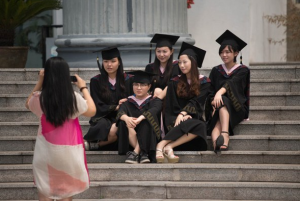What is Public Education?
China, the largest education system in the world, has compulsory and state-funded education policies. The constitution stipulates that all children must be provided with nine years of schooling: six years of primary and three years of junior secondary education. This phase is generally free, there are no tuitions fees and is mandatory by law. As of 2021, the Ministry of Education said it enrolls more than 160 million students in these compulsory education levels.
Cost of Secondary and Higher Education
After those years, though, education is no longer free for students. School High school (with fees- those can be very different from district to district) Urban areas tend to have more pronounced charges than rural regions. Even high school tuition in big cities such as Beijing and Shanghai could be as high as 2,000–5,000 RMB annually, which amounts to a heavy burden even for middle class families.
In China, there is a fee-based system for higher education. Generally, to study a bachelor degree in a chinese public university are around 5,000–10,000 RMB per year (about 725–1,450 USD). While accessible to a wider swath of the population than by Western standards [citation needed], these fees can still be prohibitive to lower-income families.
Financial Aids and Scholarships 11
Chinese government and institutes give scholarship and support study expenses to students who do not have the ability to afford. A pertinent example of this is the China Scholarships Council, which funds students in their thousands yearly both nationally and internationally.

Quality and Accessibility
The compulsory years' education in urban areas is all theoretically free; however, the NCLB act has resulted in educational disparity in urban areas compared to rural ones. Rural schools will have less facilities, fewer well-educated teachers, and less resources compared to urban ones. Evaporating Boarders: Let me begin with the reality of the unequal state of our public school classrooms, then you choose for yourself which research model is more rational to nature: This inequality creates a formidable problem in ensuring that educational opportunities are equal for all.
The role of the CEO in Running Start: a summary of international comparisons and implications
Compared with other countries in the world, then, China has made great strides in ensuring universal basic education through programmes that provide free education. But nonetheless, the movement to fully free education at all levels – including secondary and tertiary – is a very uphill battle. This situation reflects global trends where primary education is normally provided for free, but further costs arise in higher education levels.
At a global level, the Chinese model of free compulsory education is still one of the most sustainable, especially in terms of ensuring universal literacy and basic education. But the issue of whether does china have free education after compulsory years does not have a clear answer and depends on economic, social and political circumstances which draw the line for education funding and access.
Future Prospects
The Chinese education system is still developing, with reform measures including curbing the expense to families, optimizing educational equity, and improving education quality. This is also likely to be an expanding model, with the evidence of a significantly growing demand for low, or no-cost education, as the Chinese economy moves toward a more knowledge-based economy and students expect a free education at all levels.
